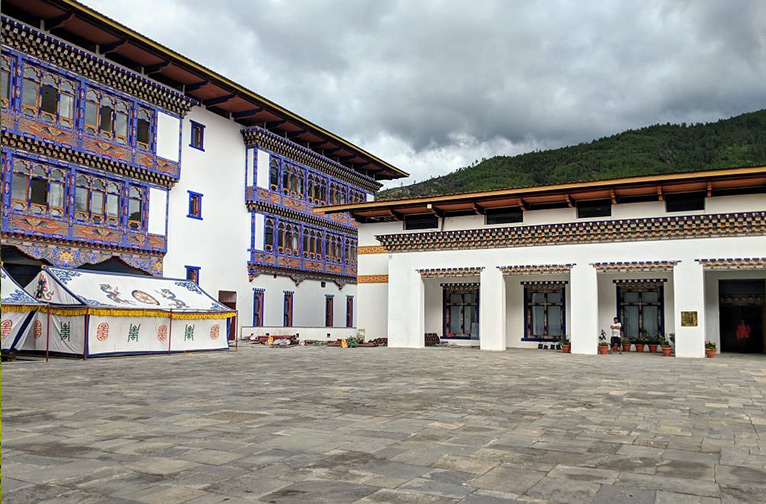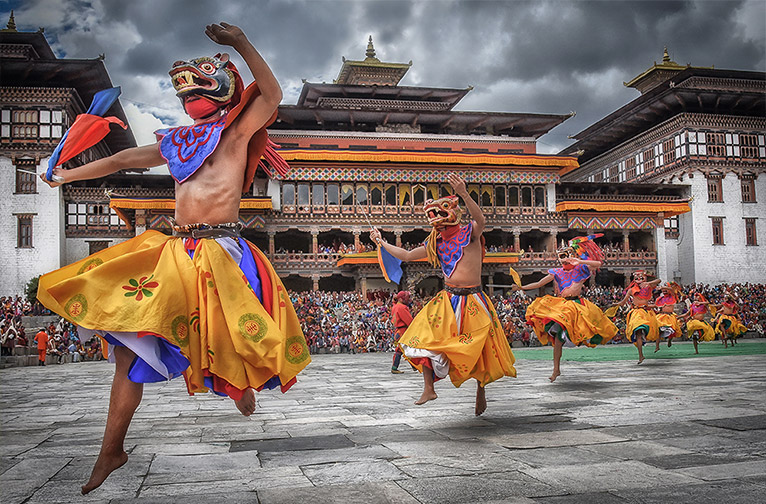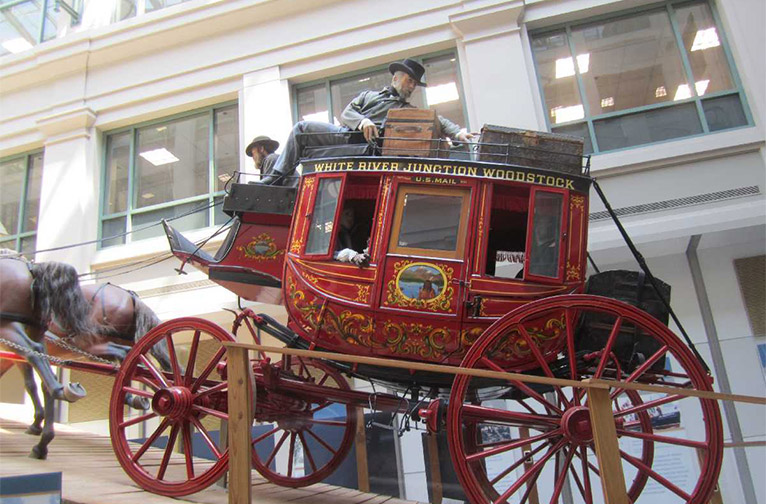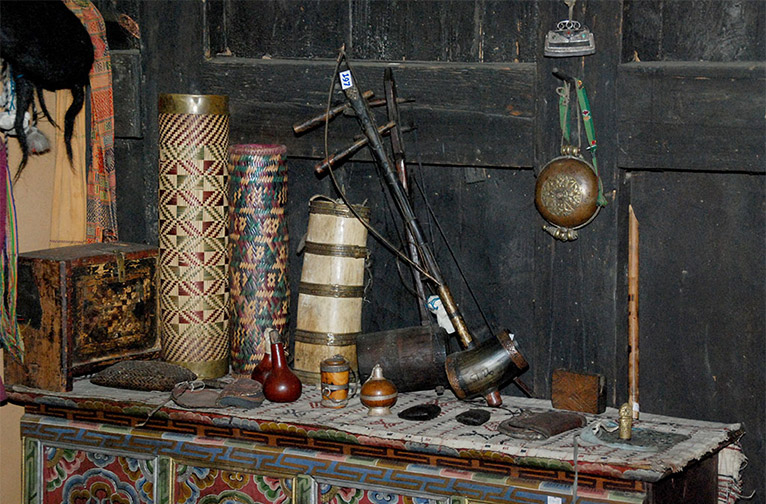Though Bhutan’s the rainy season stretches from June to September, you can still enjoy some glorious moments savouring the unique charms of this Himalayan kingdom. While the nights can be quite wet, there are ways you might not get rain. This is a great time to step out and check out things in its urban spaces, for which you might not have had time for if you were busy exploring its great outdoors.
Thimphu’s Chorten Memorial was raised as a Buddhist Stupa in memory of modern Bhutan’s monarch King Jigme Dorji Wangchuck. You’ll discover that instead of the mortal remains of the king it only houses only a photograph of him. Join the stream of people including the elderly and kids who take meditative paces in the ritual kora or circumambulation of the stupa and light butter lamps.
The complex is beautifully adorned with mandalas, statues and paintings. Head to the Trashichhoe Dzong, which serves as the secretariat and houses the office of the Bhutanese king and the throne room. It also serves as the home of the monastic admin offices. It is also the summer residence of the Je Khenpo, the chief abbot. The complex, with its massive courtyard is surrounded by beautiful gardens and landscaped verdure. The present structure is ascribed to the third king, Jigme Dorji Wangchuck, who rebuilt it in in 1962 when the Bhutanese capital was shifted from Punakha to Thimphu.
You can enjoy many insta moments in the temples, shrines and courtyard. You might even get lucky to visit the monks’ residential area on special arrangement. An unmissable sight is when it is illuminated at nightfall. In September the citizenry arrives in droves dressed in traditional costumes arrive to enjoy the 3-day Thimphu Tshechu festival held here.
Spend leisurely rounds of Thimphu’s museums. A good one to begin with is the Textile Museum, which is an excellent window to Bhutan’s centuries old textile traditions. With the aim to preserve and promote weaving an ancient living art of Bhutan, the Royal Textile Academy of Bhutan was instituted in May 2005 as an NGO and non-profit set up under the patronage of the Queen Mother Her Majesty Sangay Choden Wangchuck. as a non-government, non-profit organization. Students get trained at The Weaving School in traditional weaving, the art of yarn dyeing, contemporary skills related to design and colour combinations; they also learn the basics of business and book-keeping skills. They get an excellent opportunity to excel in traditional textile skills such as plain cotton and silk weaves, yathra weaves, weaves with simple patterns and intricate patterns.


A visit to the unusual Bhutan Postal Museum located close to the national post office can be great fun. For a lark, you can even legally get your picture put on a Bhutanese stamp. It takes just about 5 minutes to get your personalised Bhutanese stamp. Lovely souvenir to take home! You can even get personalised stamps made for your friends and family. You just need a photo of yourself and a memory stick with photos of others to get it done. Did you know Bhutan was one of the first countries to bring out 3D stamps? They have quite a unique collection of stamps here–audio stamps, grooved phonograph musical stamps that can be played on a record player, silk stamps (thangkas), steel stamps and even Bas-Relief stamps depicting ‘History of Sculpture’. Bhutanese stamps have featured the Kingdom’s rich cultural heritage, beautiful flora and fauna; they also focus on themes such as on sports, historical events and endangered animals and birds. Bhutanese stamps have uniquely served as little ambassadors of the Kingdom and emblems of good will.
In order to popularize Bhutan’s postcards, the museum organizes an activity called “Post a Postcard”. It provides students with postcards and a domestic postage stamp; the aim is to help them practice writing addresses on the postcard, and to compose a quick note on the postcard. Comprising five galleries, the museum also screens documentaries featuring Bhutan’s postal system.


The Folk Heritage Museum offers an insightful look at Bhutan’s rural past. The line up of exhibits, live demos, educational programs and documentation of rural life has made the museum a wonderful showcase of an intrinsic part of the Bhutanese world. What makes the museum unique is the recapturing of a rural setting with a farmhouse-like complex where visitors get to see paddy, wheat and millet fields. Traditional everyday features like a water-mill, kitchen gardens with vegetables that were grown over the past 100 years and. Native trees and plants grown in rural places, used for everyday needs. On view also is the famous traditional Bhutanese hot stone bath. Unmissable here is the restored three-storied, traditional rammed-mud and timber house dating from the mid-19th century.
There are many other gems to explore in Thimphu’s less crowded months. So, if you are visiting in the rainy season be prepared to take home some unique off-season memories.